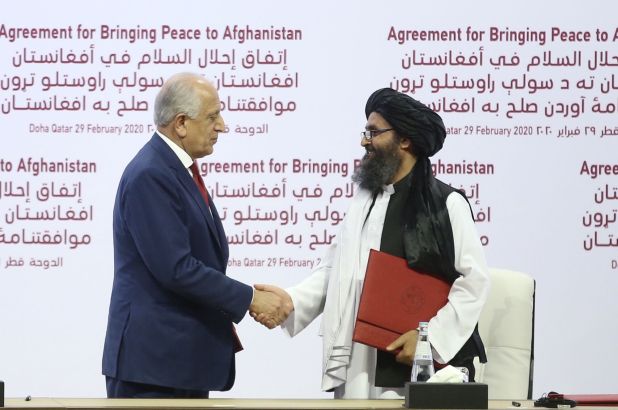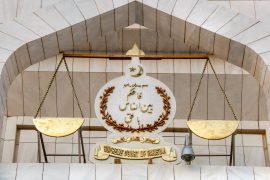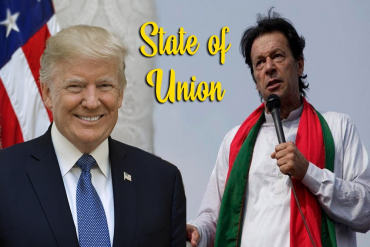STRAIGHT TALK by Hafeez Khan
A quiet storm is brewing in our front yard that will impact the future configuration of the entire region. The Americans are committed to leave Afghanistan by September 11th, 2021, twenty years after their stormy entry. They will leave a void and a power vacuum, and nature abhors a vacuum. Who will fill it? There are two main contenders, the existing Government without the artificial props or the home-grown resistance of Taliban.
An Afghanistan in turmoil does not suit the region’s nearby countries. The Afghans themselves have suffered immensely during the past four decades starting with the Saur revolution in April 1978. They endured the bloody Soviet occupation in the first decade, the infighting and civil war in the 2nd decade and two decades of foreign occupation that revived Taliban resistance. Enough blood has been spilt to turn all Afghan rivers red. A humungous tragedy yet the resilient Afghans somehow find a way to maintain their sanity.
You have to take a deep dive into their history to understand the psyche, composition, traditions and the evolution of Afghan society. Not an easy task as I learnt firsthand! The perception of Afghanistan as a rugged, inhospitable terrain inhabited by barbarians is misleading. The Western forces learnt it the hard way. They have a rich history. They are known to be a farming and herding community going back 50,000 years. Traces of Indus Valley civilization during the Bronze Age have been found along the Oxus River in Northwestern borders of Afghanistan. Historians state that the Zoroastrian religion was founded in the Afghan city of Balkh. It was one of the main faiths for centuries.
Afghanistan has always been a tribal society organizing themselves as local kingdoms connected by culture and trade with their neighbors and neighboring countries. Its earliest inhabitants can be traced back to Indo-European tribes known as Aryans, Persians, Tajiks and Uzbeks. They all settled here and grew in numbers. That is also where the present fault lines lie in Afghan society. The Aryan descendents Pakhtuns, the Tajiks, Uzbeks and the Iranian Hazaras all have internecine feuds that fuel the differences within Afghanistan.
However, what most outsiders fail to understand is whatever the level of conflict amongst themselves, if an external threat appears on the horizon, Afghans unify. They weld themselves into an ironclad shield against the challenge. Afghans have tons of history confirming that. A brief recap will elaborate this aspect of theirs. In 550 BC Cyrus II of Persia took over Kabul Valley and then Darius the Great invaded in 516BC. Iranians dominated the region and the Aryans drifted east, some across Hindu Kush to India. The next onslaught was from the West by Alexander the Great in 330 BC. His celebrated General’s Seleucid Empire was defeated from the East by Chandra Gupta Muarya, establishing the Buddhist Muaryan Empire.
Uzbek Buddhist King Kanisha was the next in 120 AD followed by the Huns and Hephthalites (White Huns) from the North and Northwest in 440 AD. Originally called Arianya, Afghanistan became the center of Buddhist culture. In 643 AD onwards, Arabs and Turks moved in and conversion to Islam started. Despite the litany of conquests listed above, Afghans resisted them for centuries to regain their freedom and independence.
Another interesting twist comes from Nimatullah’s Makhzan-i-Afghani who traces the history to an Israelite called Afghana who led the building of Al-Aqsa Mosque. He along with other Israelites were taken by Boktnasser under King Solomon and settled them around Ghor, Ghazni, Kabul, Kandahar and around Sulaiman Mountain Range south of Hindu Kush. From amongst them Qais from Ghor travelled to Medina to receive blessings of Prophet Muhammad, Peace be upon Him. Qais fought alongside the Prophet in the Battle for Makkah. Our beloved Prophet himself conferred upon Qais and his people the title of “Pashtun”. He returned to Afghanistan and expedited the spread of Islam.
Mahmud Ghazanvi at the beginning of the 2nd Millennium started the eastward move into India conducting raids, accumulating wealth and brought back slaves. Historians state that the mountain range Hindu Kush got its name from the perished slaves from India dying due to treacherous weather. This was the gateway to India followed by Mughals, Pathans, Persians and other rulers. With them the Pushtuns (Pathans) moved to the Northwest and all over India, including my ancestors.
The fiercely independent Afghans kept losing and regaining their freedom over centuries from Mongols, Mughals, Persians till the British and the Sikhs entered the equation 1800 AD onwards. They all had to exit, exhausted by their attempts to subdue Afghan’s indestructible spirit, mostly with a bloody nose. The Soviets despite their butchery were drained to the extent that their empire broke up. The world’s biggest powers have finally come to the same conclusion after wasting trillions of dollars and losing thousands of lives.
The importance of Afghanistan cannot be understated as the gateway between east and west. It is time to adopt a different approach via discussions and negotiations that benefits all parties. I believe the Afghans are also ready to have a new beginning after four decades of destruction and bloodletting. The 21st century is opening the opportunities to make it an “Asian Century”. All the neighbors and nearby countries need to join their efforts to create a stable environment in Afghanistan so progress can benefit the entire region.





